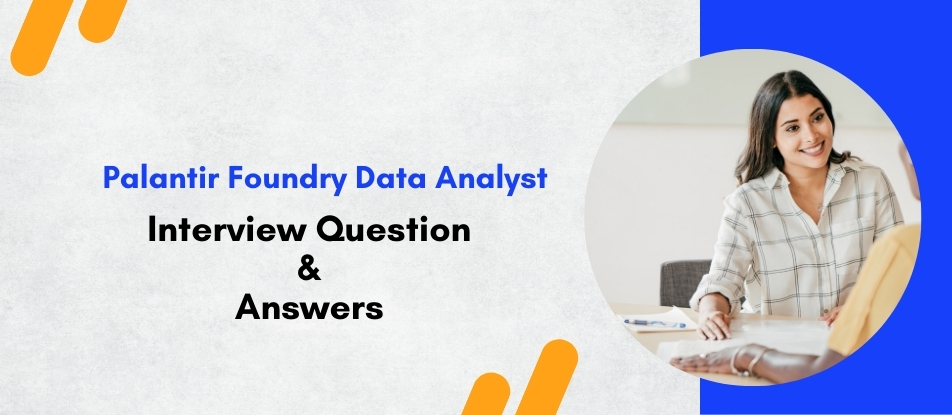
Unlock the full potential of Palantir Foundry with this comprehensive training. Gain expertise in building data pipelines, creating Ontology models, and performing advanced analytics. Learn to streamline data workflows, ensure data governance, and collaborate effectively using Foundry's powerful tools, enabling actionable insights for complex business challenges
Palantir Foundry Data Analyst Interview Questions Answers - For Intermediate
1. How do you define and manage data pipelines for recurring tasks in Foundry?
Recurring tasks in Foundry are managed by configuring scheduled pipelines that automate data ingestion and transformation processes. Using the pipeline scheduler, you can define triggers based on time intervals or events. This ensures timely updates and reduces manual intervention for repetitive workflows.
2. What are the benefits of using Palantir Foundry's data governance tools?
Foundry’s governance tools provide centralized control over data access, compliance, and quality. Features like data lineage, role-based permissions, and audit trails ensure transparency and security. These tools help organizations maintain compliance with regulations like GDPR while fostering trust in the data.
3. How does Foundry support collaboration between technical and non-technical users?
Foundry bridges the gap by offering tools like Contour for non-technical users to visualize and analyze data, while Code Workbooks cater to developers needing advanced scripting. Shared Ontology models and collaborative workspaces further enhance teamwork by providing a unified view of the data.
4. What is the purpose of the Operational Lineage feature in Foundry?
Operational Lineage tracks the flow of data and transformations within Foundry, offering a visual representation of dependencies between datasets and pipelines. This feature is crucial for debugging, impact analysis, and ensuring the reliability of data-driven decisions.
5. How do you handle schema changes in datasets within Foundry?
When a dataset schema changes, Foundry provides tools to update downstream pipelines and Ontology automatically. Using schema validation and transformation logic, you can map new fields while preserving compatibility with existing analyses. Testing pipelines after schema updates ensures no data loss or errors.
6. How does Foundry facilitate data exploration for analysts?
Foundry provides interactive tools like Contour and data previews within pipelines, allowing analysts to explore, filter, and aggregate data without needing extensive technical skills. Features like column profiling and search capabilities further enhance the data exploration experience.
7. What are the key steps in creating a machine learning workflow in Foundry?
To create an ML workflow in Foundry, start by preparing the data using pipelines. Use Code Workbooks for feature engineering and model training with libraries like Scikit-learn or TensorFlow. Store the trained model in the platform and deploy it as part of a pipeline for predictions or integration with Ontology.
8. How would you manage data quality issues in Foundry?
Data quality issues can be addressed by implementing validation rules in pipelines, such as null checks, outlier detection, or enforcing data types. Foundry's data lineage and audit logs help trace quality issues to their source, while scheduled monitoring ensures consistency.
9. What is the difference between a dataset and an Ontology in Foundry?
A dataset is a collection of raw or transformed data stored in Foundry, whereas an Ontology defines the semantic structure and relationships between datasets. The Ontology enables meaningful queries and provides context for data analysis, making it easier for non-technical users to work with data.
10. How do you configure access controls for datasets in Foundry?
Access controls in Foundry are configured through role-based permissions, allowing administrators to grant or restrict access to datasets at different levels (e.g., read, write, execute). Permissions can be applied at a granular level, such as specific columns or rows, to protect sensitive information.
11. What are transforms in Foundry, and how do you use them?
Transforms in Foundry are steps in a pipeline used to clean, process, or enrich data. They can be implemented using SQL, Python, or pre-built Foundry functions. For example, a transform might aggregate sales data by region or clean null values from customer records.
12. How does Palantir Foundry handle real-time data processing?
Foundry supports real-time data processing by integrating with streaming platforms like Kafka or Kinesis. Fusion enables real-time ingestion, while pipelines can be designed for low-latency transformations. This capability is essential for applications like fraud detection or live dashboards.
13. Explain how you would integrate external APIs into Foundry.
Integrating external APIs involves using Fusion to connect to the API, configure authentication, and define data ingestion schedules. Once data is ingested, it can be processed in pipelines and integrated into the Ontology for analysis. API responses may require pre-processing to align with Foundry's data model.
14. How do you ensure scalability in Foundry workflows?
Scalability is achieved by leveraging Foundry's distributed architecture and optimizing pipelines for performance. Techniques like partitioning, caching, and avoiding unnecessary transformations ensure efficient use of resources. Additionally, Foundry automatically scales with the underlying infrastructure.
15. What are some common challenges when working with Palantir Foundry, and how do you address them?
Common challenges include data integration complexities, pipeline performance, and managing large datasets. These can be addressed by validating data sources before ingestion, using efficient query and transformation practices, and leveraging Foundry's profiling tools to identify bottlenecks. Collaboration with stakeholders also helps align workflows with business requirements.
Palantir Foundry Data Analyst Training Interview Questions Answers - For Advanced
1. How does Foundry handle distributed data processing, and how can you optimize its performance?
Palantir Foundry handles distributed data processing by leveraging technologies like Apache Spark, which divides large datasets into smaller partitions that can be processed in parallel across a cluster. To optimize performance, ensure efficient partitioning of data to avoid skewness and balance workload across nodes. Use caching for frequently accessed data and optimize transformations by filtering and aggregating early in the pipeline. Analyze query plans to identify bottlenecks and refine complex queries. Additionally, configure resource allocation, such as memory and compute, to ensure that the system scales effectively as the data volume increases.
2. What are the best practices for managing data transformations in Palantir Foundry?
Best practices for managing data transformations include organizing transformations into modular, reusable components that can be applied across multiple datasets. Use SQL or Python scripts for clarity and maintain a consistent naming convention for pipeline steps. Document each transformation’s purpose and expected outputs to aid debugging and collaboration. Implement validation checks at key stages to ensure data quality and leverage Foundry’s version control to track changes. Testing transformations on smaller data samples before full-scale execution can also prevent errors in production pipelines.
3. How would you approach building a comprehensive Ontology model for a complex enterprise use case?
Building an Ontology model for a complex enterprise use case requires thorough planning and stakeholder collaboration. Start by identifying key entities (e.g., customers, products, transactions) and their relationships. Use Foundry’s data profiling tools to understand the structure and quality of source datasets. Define attributes and hierarchies for each entity and map them to datasets, ensuring consistency across the model. Incorporate business rules and data validation constraints into the Ontology. Regularly review the model with stakeholders to ensure alignment with business needs and update it as requirements evolve.
4. Explain how data lineage in Foundry can be leveraged for compliance and operational efficiency.
Data lineage in Foundry visually maps the flow of data from its source to final transformations and outputs. This transparency is critical for compliance, as it allows auditors to trace data usage and verify that it adheres to regulatory standards like GDPR or HIPAA. For operational efficiency, lineage helps identify dependencies between datasets and pipelines, making it easier to troubleshoot issues and assess the impact of schema changes. It also facilitates better collaboration by providing a clear understanding of data workflows across teams.
5. How do you manage and monitor data quality in Foundry?
Managing data quality in Foundry involves implementing validation rules at the ingestion stage to check for missing values, duplicates, and incorrect formats. Use Foundry’s data profiling tools to monitor metrics like completeness, accuracy, and consistency. Set up automated alerts for anomalies and create dashboards in Contour to visualize data quality trends. Regularly review pipelines and Ontology to ensure they align with current business requirements. Engage stakeholders to validate outputs and incorporate their feedback to improve data quality management.
6. What advanced features in Foundry’s Fusion module enable seamless data integration?
Foundry’s Fusion module supports advanced features like schema mapping, real-time data ingestion, and API integration. It can automatically detect changes in source schemas and suggest updates to maintain compatibility with downstream workflows. Fusion also supports advanced transformation capabilities, such as deduplication and data enrichment, during the ingestion process. Its ability to integrate with streaming platforms like Kafka and enterprise systems like SAP makes it versatile for complex data ecosystems. These features ensure seamless integration while maintaining data consistency and quality.
7. How do you implement custom analytics workflows using Code Workbooks in Foundry?
Code Workbooks in Foundry allow users to create custom analytics workflows using Python, R, or SQL. Start by importing necessary libraries and loading datasets from Foundry’s Ontology. Perform data preprocessing, such as filtering or aggregations, and use analytics libraries like Pandas or Scikit-learn for advanced computations or machine learning. You can visualize results using libraries like Matplotlib or export them as datasets for further use. Collaboration is enabled by sharing the Workbook with colleagues, and the integrated version control ensures traceability of changes.
8. What challenges do you face when working with unstructured data in Foundry, and how do you address them?
Unstructured data, such as text, images, or videos, poses challenges like storage, preprocessing, and analysis. In Foundry, you can address these challenges by using tools like Apache Spark for distributed processing and specialized libraries for unstructured data, such as OpenCV for images or NLTK for text. Store unstructured data in compatible formats, like JSON or Parquet, to maintain flexibility. Use Foundry’s pipelines to preprocess the data, such as extracting features or converting formats, before integrating it with structured datasets.
9. How does Foundry support advanced role-based access control (RBAC), and why is it important?
Foundry’s advanced RBAC allows administrators to define permissions at granular levels, such as specific datasets, columns, or even rows. This is critical for maintaining data security and compliance, as it ensures that users only access data relevant to their role. RBAC also supports dynamic permissions based on user attributes, such as department or project assignment. Implementing RBAC reduces the risk of unauthorized access and enhances collaboration by providing users with tailored access to necessary resources.
10. How do you manage versioning in Palantir Foundry, and why is it essential?
Versioning in Foundry automatically tracks changes to datasets, pipelines, and Ontology models. Each change creates a new version, allowing users to review or revert to previous states. This is essential for maintaining data integrity, especially in collaborative environments where multiple users may modify workflows. Versioning also supports compliance by providing an auditable history of data transformations and ensures that updates do not inadvertently disrupt dependent systems.
11. What techniques do you use to debug complex Foundry pipelines?
To debug complex pipelines in Foundry, start by analyzing error logs and using the data lineage feature to trace issues to their source. Break down the pipeline into smaller components and test each transformation individually to isolate the problem. Use Foundry’s data preview functionality to verify intermediate outputs. For performance-related issues, review Spark execution plans and optimize transformations. Collaborate with colleagues and document the debugging process to facilitate resolution and prevent recurrence.
12. How do you integrate external machine learning models into Foundry workflows?
External machine learning models can be integrated into Foundry workflows using Code Workbooks or APIs. Export data from Foundry pipelines into a compatible format, such as CSV or Parquet, and use libraries like TensorFlow or Scikit-learn to train models externally. Once trained, deploy the models as APIs or directly in Workbooks to perform predictions. You can store the results back in Foundry for further analysis or integrate them with Ontology for operational use.
13. How do you ensure scalability in Foundry for global data operations?
To ensure scalability, design modular pipelines that can be reused across regions and departments. Use distributed processing for large-scale datasets and partition data by regions or business units. Implement dynamic Ontology models that adapt to different data sources while maintaining consistency. Foundry’s cloud-native architecture supports horizontal scaling, allowing organizations to handle increasing workloads without performance degradation. Regularly monitor system performance and optimize resource allocation to maintain efficiency.
14. How do you balance real-time and batch processing requirements in Foundry?
Balancing real-time and batch processing involves aligning workflows with business needs. Use Foundry’s streaming capabilities for time-sensitive tasks, such as fraud detection or live dashboards, and batch processing for tasks like daily reports or trend analysis. Design pipelines that integrate both approaches, ensuring data consistency across real-time and batch outputs. Monitor performance and resource usage to prevent conflicts and optimize processing times.
15. How do you use Foundry’s APIs to enhance functionality and integrate with external systems?
Foundry’s APIs allow users to extend the platform’s functionality by connecting it with external systems. You can use APIs to automate data ingestion, retrieve processed datasets, or trigger workflows from external applications. For example, integrate Foundry with a CRM system to automatically update customer insights or use APIs to export analytics results into visualization tools like Tableau. Proper API documentation and authentication management are critical to ensuring secure and efficient integration.
Course Schedule
| Dec, 2025 | Weekdays | Mon-Fri | Enquire Now |
| Weekend | Sat-Sun | Enquire Now | |
| Jan, 2026 | Weekdays | Mon-Fri | Enquire Now |
| Weekend | Sat-Sun | Enquire Now |
Related Courses
Related Articles
- How to Become a Certified Workday Recruiting Expert?
- Why Choose SAS Clinical Training for a Future in Data Analysis?
- How SAP IBP (Integrated Business Planning) Is Revolutionising Demand Forecasting
- Artificial Intelligence: Is Intelligence beyond mankind really good?
- Sharpen Your Skills: Become Certified in Caesar II Pipe Stress Analysis
Related Interview
- ADM329 SAP S/4HANA Downtime Optimized Conversion Training Interview Questions Answers
- PL-300 Microsoft Power BI Data Analyst Interview Questions Answers
- BIM with Revit for Architects Training Interview Questions Answers
- MLOps Fundamentals Interview Questions Answers
- MS-900 Microsoft 365 Fundamentals Interview Questions Answers
Related FAQ's
- Instructor-led Live Online Interactive Training
- Project Based Customized Learning
- Fast Track Training Program
- Self-paced learning
- In one-on-one training, you have the flexibility to choose the days, timings, and duration according to your preferences.
- We create a personalized training calendar based on your chosen schedule.
- Complete Live Online Interactive Training of the Course
- After Training Recorded Videos
- Session-wise Learning Material and notes for lifetime
- Practical & Assignments exercises
- Global Course Completion Certificate
- 24x7 after Training Support




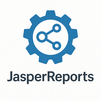

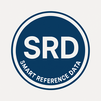
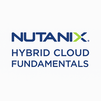


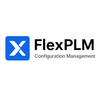
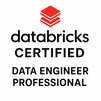


 Join our Live Instructor-Led online classes delivered by industry experts
Join our Live Instructor-Led online classes delivered by industry experts